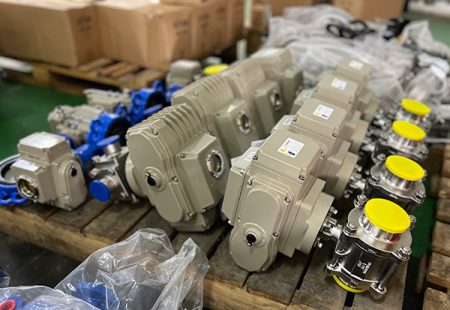
Motor-operated valves are very important in modern factories. Many industries use these valves to control fluid flow exactly and to work well. Companies pick motor-operated valves because they make work faster, need less hand work, and help follow safety rules. These valves use electric motors to work, like an electric control valve, not air like a pneumatic ball valve or pneumatic control valve. They have special features that let them work in dangerous places and tough weather. They also help with real-time checks. Because of this, industries get more trust in their machines, save energy, and can use more digital tools.
Overview
Motor-Operated Valves Explained
Motor-operated valves use electric motors to move a valve. They can open, close, or change the valve’s position. These valves help control liquids or gases in pipes. The motor turns the valve stem to move the valve. This lets workers control the valve from far away. People do not need to stand next to the valve. The main parts are the electric actuator, valve body, stem, gearbox, and control system. The actuator gets signals from the control system. It moves the valve when needed. Limit switches stop the motor when the valve is fully open or closed.
Motor operated valves are good for hard-to-reach or dangerous places. They connect easily to automated systems. This makes them important in modern factories. Manual valves need someone to turn a handle. Pneumatic valves use air pressure. Motor-operated valves use electricity for better control.
Key Functions
Motor operated valves do many important jobs in factories:
- They let workers control valves from far away.
- They help machines work by themselves with preset instructions.
- They give exact control over how much liquid or gas moves.
- They can close fast in emergencies.
- They lower the need for people to do the work, which keeps workers safe.
A motorized valve can also work in fail-safe modes. For example, it can close by itself if the power goes out. This helps stop accidents. These valves are used in oil and gas pipelines, water plants, and power stations.
Benefits
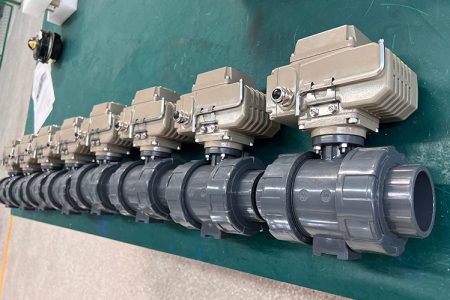
Motor operated valves are used in many industries because they have many benefits. Companies pick these valves for several reasons:
- They control flow exactly, which stops leaks and saves resources.
- Automation means less hand work, so safety and reliability go up.
- They help companies follow environmental rules by lowering emissions and energy use.
- Remote checks and real-time updates keep workers safe and cut down on repairs.
- They work with digital systems for easier maintenance and control.
| Industry Sector | Main Reason for Using Motor-Operated Valves |
|---|---|
| Oil & Gas | Precise flow and pressure control in pipelines and refineries |
| Power Generation | Reliable operation in harsh conditions and efficient system control |
| Water Treatment | Accurate flow management and regulatory compliance |
| Chemical Processing | Safety, corrosion resistance, and automation |
| HVAC Systems | Energy efficiency and smart building integration |
Motor operated valves make systems safer and more reliable. For example, power plants using these valves need fewer repairs and last longer. New designs stop backflow and pressure surges. This keeps systems safe. More factories now use smart, motorized control valve systems. These systems have real-time checks and help fix problems before they get worse.
Types of Motor Operated Valves
Picking the right motor operated valve matters for every company. Each valve type works best in certain jobs. Knowing the differences helps companies choose wisely. The right valve makes the system safer and more reliable. It also helps control flow better.
Common Valve Types
Gate Valves
Gate valves use a flat gate to stop or let flow go. When open, the gate moves up and lets fluid pass. These valves are good for turning flow on or off in big pipes. They seal well and can handle high pressure. Water plants and power stations use gate valves a lot. They last long and do not need much fixing.
Globe Valves
Globe valves have a round body and a plug that moves up and down. This shape gives better control than gate valves. Globe valves help control liquids or gases very well. They are used in cooling water, vents, and oil systems. Their shape lets workers change flow rates easily.
Ball Valves
Ball valves use a round ball with a hole in it. Turning the ball opens or closes the valve fast. These valves shut off quickly and seal tight. Ball valves work for many fluids and are used in chemical plants and clean water systems. They also do not rust easily.
Butterfly Valves
Butterfly valves have a disc that turns inside the pipe. Turning the disc opens or closes the valve. These valves are light and cost less than others. Butterfly valves are best for big pipes, water systems, and HVAC units. They open and close fast and fit in small spaces.
Plug Valves
Plug valves use a cylinder or cone-shaped plug to stop or let flow go. Turning the plug changes the flow path. These valves work well with thick or dirty fluids. Plug valves are simple and easy to use. Many factories use them for quick shut-off and simple flow control.
Tip: Picking the right valve type saves money, stops leaks, and keeps workers safe.
Key Features of Each Type

Flow control characteristics
Each valve type controls flow in its own way. Globe valves and motorized valve systems give the best control. Ball and butterfly valves are good for quick on/off jobs. Gate valves let all the flow through when open but do not adjust flow well. Plug valves work with thick fluids and simple systems.
Sealing performance
Sealing stops leaks. Ball valves and gate valves seal very tight. This makes them good for stopping leaks. Globe valves also seal well but may need more care later. Butterfly valves seal well in low-pressure jobs. Plug valves seal well for thick or dirty fluids.
Suitability for different pressures and media
Some valves work better with high pressure or special fluids. Gate valves and globe valves handle high pressure and heat. Ball valves do not rust and work with many chemicals. Butterfly valves fit big pipes and low-pressure jobs. Plug valves work with thick, dirty, or sticky fluids.
| Valve Type | Flow Control | Sealing | Best Use Cases |
|---|---|---|---|
| Gate Valve | On/Off | Tight | Water, power, process plants |
| Globe Valve | Precise | Good | Cooling, vents, oil systems |
| Ball Valve | On/Off | Tight | Chemicals, clean water, general |
| Butterfly Valve | On/Off | Good | Large pipes, HVAC, water |
| Plug Valve | Simple | Good | Thick fluids, quick shut-off |
Typical Application Scenarios
Industrial process control
Motor operated valves help factories control liquids and gases. Globe valves and motorized valve systems give exact control in chemical plants and refineries. Ball valves and butterfly valves are good for fast on/off jobs in many places.
Safety shut-off
Some systems must stop flow fast in an emergency. Ball valves and gate valves shut off flow quickly and tightly. These valves protect workers and equipment from leaks or spills.
Precise flow regulation
Some jobs need exact amounts of fluid. Globe valves and motor operated valve systems give precise control. This helps save resources and follow safety rules.
Note: Knowing the differences between valve types helps companies pick the right one. This choice affects how well the system works, how safe it is, and how much it costs.
Oil & Gas
Motor-operated valves are very important in oil and gas work. They help move oil and gas from wells to refineries. These valves work in all parts of the industry. Companies use them to make things safer and faster. They also help in tough places.
Pipeline Control
MOVs help control pipelines by changing flow, pressure, and direction. They use electric motors to move the valves. This gives exact control and fast changes. MOVs link to control systems. Operators can manage pipelines from safe spots. MOVs are used everywhere in oil and gas:
- Upstream: They control wellheads and help shut down safely.
- Midstream: They manage flow in long pipelines.
- Downstream: They help with refining and chemical work.
MOVs react fast to control signals. They keep pipelines safe by changing with pressure or flow. MOVs meet strict rules for safety and reliability.
MOVs can close valves quickly if sensors find a problem, like high pressure. This helps stop accidents and keeps pipelines safe.
Emergency Shutdown
Safety is very important in oil and gas plants. MOVs are key for emergency shutdowns. If there is danger, like high pressure or leaks, MOVs get signals from safety systems. They close valves fast to stop dangerous fluids. This quick action protects people, equipment, and nature.
Electric actuators in MOVs move valves fast and right. Automation lets MOVs act without waiting for people. This lowers accident risks and helps follow safety rules. MOVs are tested often to make sure they work.
Remote Operation
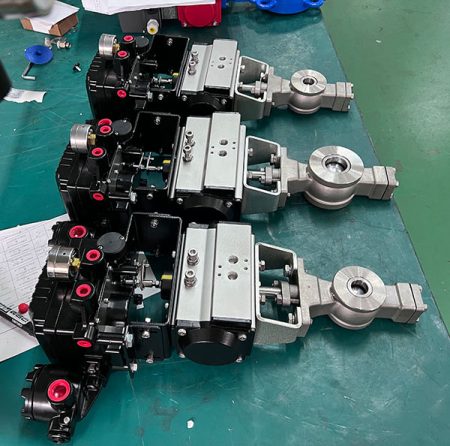
Many oil and gas sites are hard to reach or dangerous. MOVs let workers control valves from far away. This means fewer people need to go into risky places. MOVs connect to smart control systems. These systems give real-time checks and help find problems early. Workers can plan repairs before things get worse.
| Advantage | Explanation |
|---|---|
| Enhanced Safety | Remote control keeps workers safe and helps in emergencies. |
| Precision Control | MOVs give exact, programmable control for better safety and quality. |
| Remote Monitoring | Workers can check valves and systems from safe places, even far away. |
| Rapid Response | MOVs open or close valves very fast, which is important in emergencies. |
| System Integration | MOVs work with control systems to automate and connect with other machines. |
| Reduced Wear and Tear | Electric motors mean less manual work, so valves last longer and need less fixing. |
Remote control also helps with digital tools, like early warnings and smart repairs. This makes oil and gas work safer and more dependable.
Water Treatment
Flow Regulation
Water treatment plants use motor-operated valves to control water flow. These valves have electric motors and actuators to move the valve. Operators can open, close, or adjust the valve easily. This setup gives workers exact control over water movement. Motorized control valves work in homes and big factories. They can handle up to 250 gallons per minute. They fit tanks as wide as 63 inches.
Operators use simple front panel controls to set the valves. LCD displays and backup batteries make them easy to use. DC motors are reliable and help the system work well. Accessories like alternating valves and controllers help with complex water systems. The valves connect to control units that send signals to move the valve. This lets workers control flow from far away. It also makes the process faster and cuts down on mistakes.
- Motor-operated valves react quickly to changes.
- They save energy by doing tasks automatically.
- They make the system more reliable by lowering human mistakes.
Tip: Automated valves help water plants work faster and keep water safe.
Chemical Dosing
Getting the right amount of chemicals is important for clean water. Motor-operated valves help with this job. They let workers add the right amount of chemicals at the right time. This keeps water quality high and safe.
Automation means workers do not have to add chemicals by hand. This lowers the chance of using too much or too little. Water plants in places like Marlborough and Southern Water have saved money and improved results with these valves. Better dosing means safer water and smoother plant work.
- Valves stop too much or too little chemical use.
- They make it easy to change dosing when water changes.
- Plants have fewer repairs and better water quality.
Leak Isolation
Leaks waste water and can cause damage. Motor-operated valves help find and stop leaks fast. Operators can close valves from far away using control systems like SCADA or DCS. This means workers do not have to go into dangerous or hard places.
On-off motorized ball valves shut tightly to stop leaks. Some valves close by themselves if the power fails. Quarter-turn valves, like ball and butterfly types, help isolate problem spots quickly. These features make leak control safer and easier.
- Remote control means less manual work in emergencies.
- Automatic shutoff protects machines and nature.
- Fast isolation stops water loss and system harm.
Power Generation
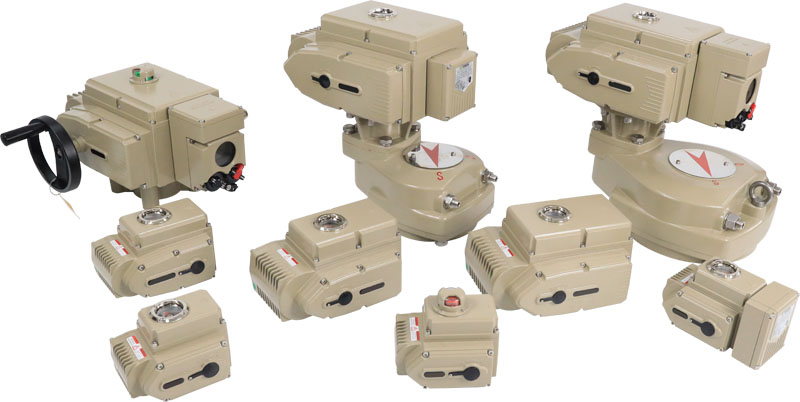
Motor-operated valves are very important in power plants. Both nuclear and regular power plants use these valves. They help keep the plant safe and working well. MOVs control water, steam, and other fluids in many places. They help with safety and daily jobs.
Boiler Systems
Boiler systems need careful control to work right. MOVs help run important valves in these systems. Operators use them for startup valves and to control the boiler drum level. These valves also work with damper controls, like louver dampers and wall fire dampers. MOVs can adjust very closely, sometimes within 0.1% of the goal. This helps boilers work better and saves energy.
- MOVs control startup and shutdown valves.
- They manage drum level and feedwater flow.
- They move dampers for air and gas flow.
- They can be set for modulating or on-off actions.
- MOVs work with both linear and quarter-turn valves.
Moving valves accurately makes boilers work better. Big boilers can save a lot of money this way. MOVs help plants run smoothly and lower energy bills.
Cooling Circuits
Cooling circuits keep power plants safe and cool. MOVs control how cooling water moves in the plant. They open and close valves for pumps, heat exchangers, and cooling towers. MOVs react fast to changes in temperature or pressure. This quick action keeps equipment from getting too hot.
Operators can control MOVs from a main room. This remote control keeps workers safe and makes things more reliable. MOVs also help with repairs by letting workers safely shut off parts of the cooling system.
Tip: MOVs in cooling circuits help stop expensive damage and keep the plant at the right temperature.
Nuclear Safety
Nuclear power plants have very strict safety rules. MOVs are made and tested to meet these tough standards. The U.S. Nuclear Regulatory Commission (NRC) checks MOVs often to make sure they work in all situations. MOVs do important safety jobs, like stopping or controlling fluid flow to protect the reactor.
Some MOVs use microprocessor relays to keep motors from getting too hot. These relays act like thermal overloads and stop the motor if needed. This keeps the actuator safe and stops electrical problems. Online systems watch MOVs all the time. They help find problems early and let workers fix things before they break. This lowers the risk of valve failure during important times.
Studies show the actuation circuit is very important for MOV safety. Making this part better lowers the chance of problems and keeps the whole system safer. MOVs help nuclear plants follow rules and keep people and nature safe.
| MOV Role | Conventional Plants | Nuclear Plants |
|---|---|---|
| Boiler control | ?? | ?? |
| Cooling water control | ?? | ?? |
| Emergency shutdown | ?? | ?? |
| Safety system isolation | ?? | |
| Regulatory compliance | ?? |
Chemical & Industrial
Process Automation
Motor-operated valves help automate chemical and industrial lines. These valves use electric actuators to move liquids and gases in pipes. Workers can open or close valves from a control room. They can also use automated systems to do this. This setup lets changes happen fast without hand work. MOVs follow programmed steps to stop mistakes. They can shut off quickly if there is an alarm. For example, they react to high heat or pressure. In factories, MOVs work with pumps and other machines. A pump will not start unless the valve is open. This order keeps things safe and running well. MOVs send signals to show if a valve is open or closed. This helps workers make good choices and avoid unsafe moves.
Note: MOVs make work safer by letting people control fluids from far away or by using automatic systems.
Hazardous Fluids
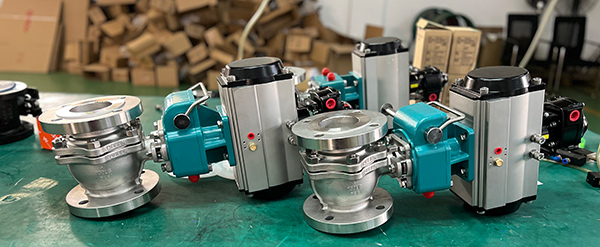
Chemical plants use many dangerous fluids. MOVs must be safe to use in these places. The table below shows how MOVs are picked for different risky areas:
| Hazardous Location Class | Key Selection Criteria for Motor-Operated Valves Handling Hazardous Fluids |
|---|---|
| Class I (Gases/Vapors) | Explosion-proof covers, strong valve body, cool coil, flame-safe design |
| Class II (Dust) | Dust-proof covers, cool surface, design for dust buildup |
| Class III (Fibers/Flyings) | Covers to block fibers, spark safety, cool surface |
| General Design Factors | Materials that do not rust, fail-safe parts, follow rules, safe wiring, tests, manual backup, easy care |
MOVs in these places use special materials that do not rust or break from chemicals. They have safety parts like fail-safe and manual backup. These valves must pass tests for being safe from blasts and dust. Good design and care help MOVs last longer and keep people safe.
Compliance
MOVs in chemical and industrial jobs must follow many safety rules. These rules cover motors, switches, controls, and what they are made of. Some important rules are:
- Motors need heat protection so they do not get too hot.
- Switches and controls must be safe to use.
- Heat cut-offs stop things from getting too hot.
- Electrical parts must be spaced out to stop shorts.
- Surge parts must be put in the right way.
- Remote control parts must follow safety codes.
- Valves must have clear labels for pressure, flow, and heat.
- Parts that touch fluids must not rust or melt.
- Threads and flanges must fit ANSI/ASME rules.
- Safety valves must not leak much for liquids and gases.
- Motors and actuators must pass tests for strength, heat, and power.
- Wires use color codes to keep things safe.
These rules help MOVs work safely and last a long time in tough places.
HVAC & Building
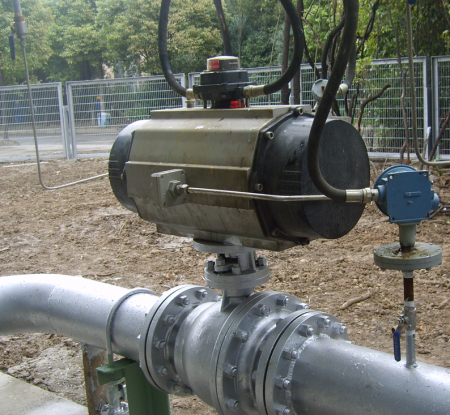
Water Distribution
Motor-operated valves are important for water in big buildings. These valves help move water in heating and cooling systems. Building managers use two-way and three-way valves to control water. Two-way valves slow down water and work in changing systems. Three-way valves keep water moving by sending it different ways.
- Valve actuators get signals and change water flow by themselves.
- Motorized ball valves control water and temperature very well. This lets each part of a building stay comfortable.
- Automation means less hand work. Workers can watch and control valves from far away, which saves time and keeps them safe.
- These valves have safety checks that find problems early. This helps the system stay safe and work well.
- Good pump and valve control keeps pressure steady. This saves energy and stops problems like noise or shaking pipes.
- Changing or fixing valve actuators can solve flow problems and make water use better.
Motor-operated valves help buildings use less energy. They control water flow to save power. Three-way motorized valves can mix or send water where it is needed for HVAC.
Air Handling
Air handling units in big buildings use motor-operated valves to control air and refrigerant. These valves help set the right temperature and humidity. When the system needs to heat or cool, the valves open or close to let air or refrigerant through.
Valve actuators turn signals into movement. They open, close, or move valves to control air. This keeps the building nice for everyone. The valves listen to thermostats or building controls. This lets workers set the right temperature and humidity.
Motor-operated valves help save energy. They only move air when needed, so energy bills go down. Good valves mean the air system works well and does not break often.
Tip: Good air handling keeps people happy and helps save money on energy.
Energy Control
Saving energy is very important in new buildings. Motor-operated valves help by making heating, cooling, and water systems work better. These valves change settings by using data from sensors and controls.
- Automation lets managers set times and control areas for heating and cooling.
- Motorized valves stop wasting energy by turning off flow when not needed.
- Central control makes it easy to watch and change energy use in the building.
- Programmable valves react fast to changes, so energy use stays low and comfort stays high.
Motor-operated valves also help buildings be greener. They help meet green rules by using less energy. Remote and central control makes fixing problems easier and helps find issues early.
| Benefit | How Motor-Operated Valves Help |
|---|---|
| Energy Efficiency | Control flow and stop waste |
| Comfort | Give exact temperature control |
| Safety | Find and fix problems fast |
| Flexibility | Allow remote and automatic control |
Motor-operated valves make HVAC and building systems smarter, safer, and better.
Aerospace & Special Uses
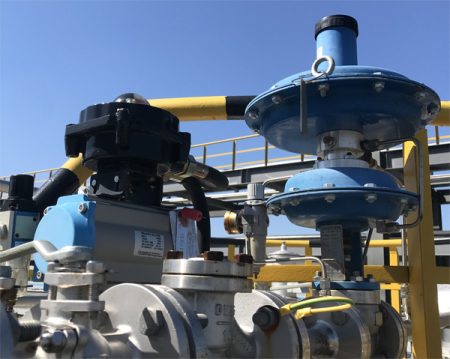
Motor Actuator Valve in Aircraft
Airplanes need special parts to fly safely. The motor actuator valve is important in many airplane systems. Engineers make these valves to follow strict safety and performance rules. In new planes, the motor actuator valve uses electro-mechanical actuators. These use only electricity, so no heavy hydraulic pipes are needed. This makes the plane lighter and easier to fix.
The motor actuator valve works with smart controllers. These controllers help move flaps, rudders, and landing gear. They also check if the valve is working well and send updates to pilots or ground crews. This helps keep the plane safe and lets workers fix problems early.
Each airplane needs its own special parts. The motor actuator valve must fit what the plane needs. It moves flight surfaces, steers antennas, and opens or closes cargo doors. The design is made to be reliable and exact. If the motor actuator valve stops working, it can cause big trouble for the plane.
Aircraft designers pick the motor actuator valve because it gives exact control and needs less care than old hydraulic systems.
The motor operated valve is also used in other special ways. For example, it can control fuel flow, air pressure, or help with cooling. These valves must work in hard places, like high up in the sky and in changing temperatures. They must last a long time without breaking.
Here are some main features of the motor actuator valve in airplanes:
- Works with smart controllers for better control and health checks.
- Needs less heavy equipment, so the plane is lighter.
- Gives exact movement for landing gear and flight surfaces.
- Is very reliable and easy to take care of.
- Can be used for many jobs inside the plane.
| Application Area | Role of Motor Actuator Valve |
|---|---|
| Flight Control Surfaces | Moves flaps, rudders, and stabilizers |
| Landing Gear | Extends and retracts gear safely |
| Cargo Doors | Opens and closes doors with precision |
| Antenna Steering | Aims antennas for better communication |
| Utility Systems | Controls fuel, air, and cooling flow |
The motor operated valve and the motor actuator valve both help make planes safer and work better. As technology gets better, these valves will be even more important in new airplanes.
Common Failures of Electric Valves
Knowing about common failures in electric valves helps companies stay safe. When workers understand what can go wrong, they can fix issues early. Regular checks and fast repairs stop big problems and shutdowns.
Frequent Failure Types
Actuator Malfunctions
Actuators help the valve open or close. Sometimes, actuators break because gears wear out or motors stop working. Blocked parts can also cause trouble. If an actuator fails, the valve might not move. This can stop water, gas, or chemicals from flowing. It can also slow down work. Cleaning and oiling moving parts helps stop these problems. Workers should test actuators after fixing them to make sure they work.
Electrical Issues
Electric valves need steady power to work. Bad wires, power spikes, or burnt coils can stop the valve. If the motor uses too much power, it can get too hot and break. A stuck valve can make the motor use more power and get damaged. These problems can trip circuits or hurt the motor. Watching power use and checking wires helps keep the valve working.
Note: High heat and electrical stress can make electric valves wear out faster. Keeping motors cool and looking for overheating is important.
Mechanical Wear and Tear
Valves have many moving parts that can wear out. Friction can make the valve stick or move slowly. Dirt inside the valve can block it. If the valve is too small or clogged, pressure can drop. Checking and cleaning valves often helps find these problems early.
Seal and Packing Leaks
Seals and packing stop leaks in the valve. Over time, seals can wear out, crack, or get loose. Leaks waste water, gas, or chemicals and can be dangerous. Workers should look for leaks during regular checks and change seals when needed. Using the right seal materials helps them last longer, even in tough places.
Control Signal Failures
Electric valves need control signals to open or close at the right time. If the control system sends a bad signal or wires are broken, the valve may not work. This can cause missed shutoffs or wrong flow amounts. Testing signals and checking wires helps stop these problems.
Common Problems in Electric Valves:
- Pressure drops from leaks or clogs
- Corrosion from chemicals or wetness
- Cavitation from vapor bubbles
- Coil problems in solenoid valves
- Sticking from friction
- Wrong valve size
Tip: Making a plan for regular checks, cleaning, and changing parts helps electric valves last longer and stops sudden problems.
Motor-operated valves help many industries work better and safer. They make jobs easier by letting workers use automation and remote control. In the future, new trends will change how these valves work:
- AI and sensors will help find problems before they happen.
- Wireless and battery-powered valves will be easier to use anywhere.
- Smart valves will use IoT to check how things are working right now.
- Valves that save energy and are good for the planet will help protect nature.
These new ideas will help companies solve problems and do their work even better.
FAQ
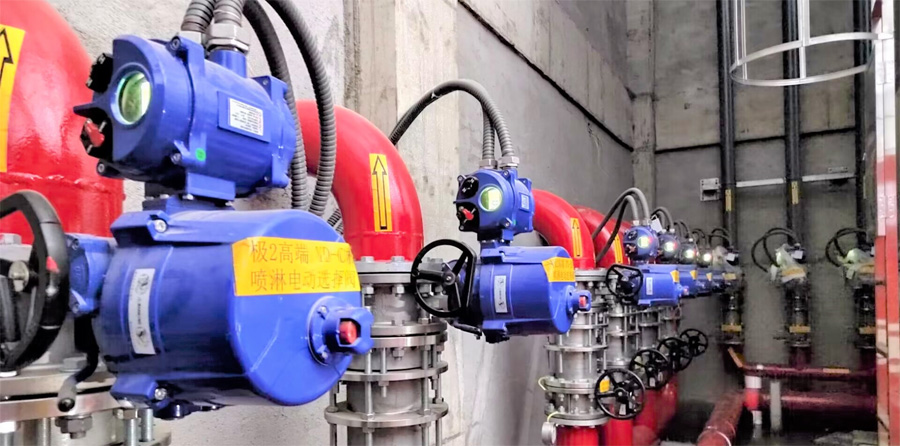
What is a motor-operated valve (MOV)?
A motor-operated valve uses an electric motor to move a valve. It can open, close, or adjust the valve’s position. This helps control how liquids or gases move in pipes. Many industries use MOVs for safety and automation.
Where are motor-operated valves most commonly used?
MOVs are found in oil and gas, water treatment, and power plants. Chemical factories and building HVAC systems also use them. These valves help control flow, keep things safe, and let workers use remote controls.
How do MOVs improve safety in factories?
MOVs let workers control valves from far away. They can close fast if there is an emergency. This helps stop accidents and keeps people and machines safe.
What is the difference between a motor-operated valve and a pneumatic valve?
A motor-operated valve uses electricity to move the valve. A pneumatic valve uses air pressure instead. MOVs give better control and work well where there is no air supply.
How often should companies maintain motor-operated valves?
Companies should check MOVs often. Maintenance means cleaning, testing actuators, and looking for leaks. Regular care stops problems and keeps everything working well.
Are motor-operated valves energy efficient?
MOVs save energy by automating flow and cutting down on hand work. They also help stop leaks and waste, so systems use less energy.
Tip: Checking MOVs often and fixing them early helps them last longer and work better.
